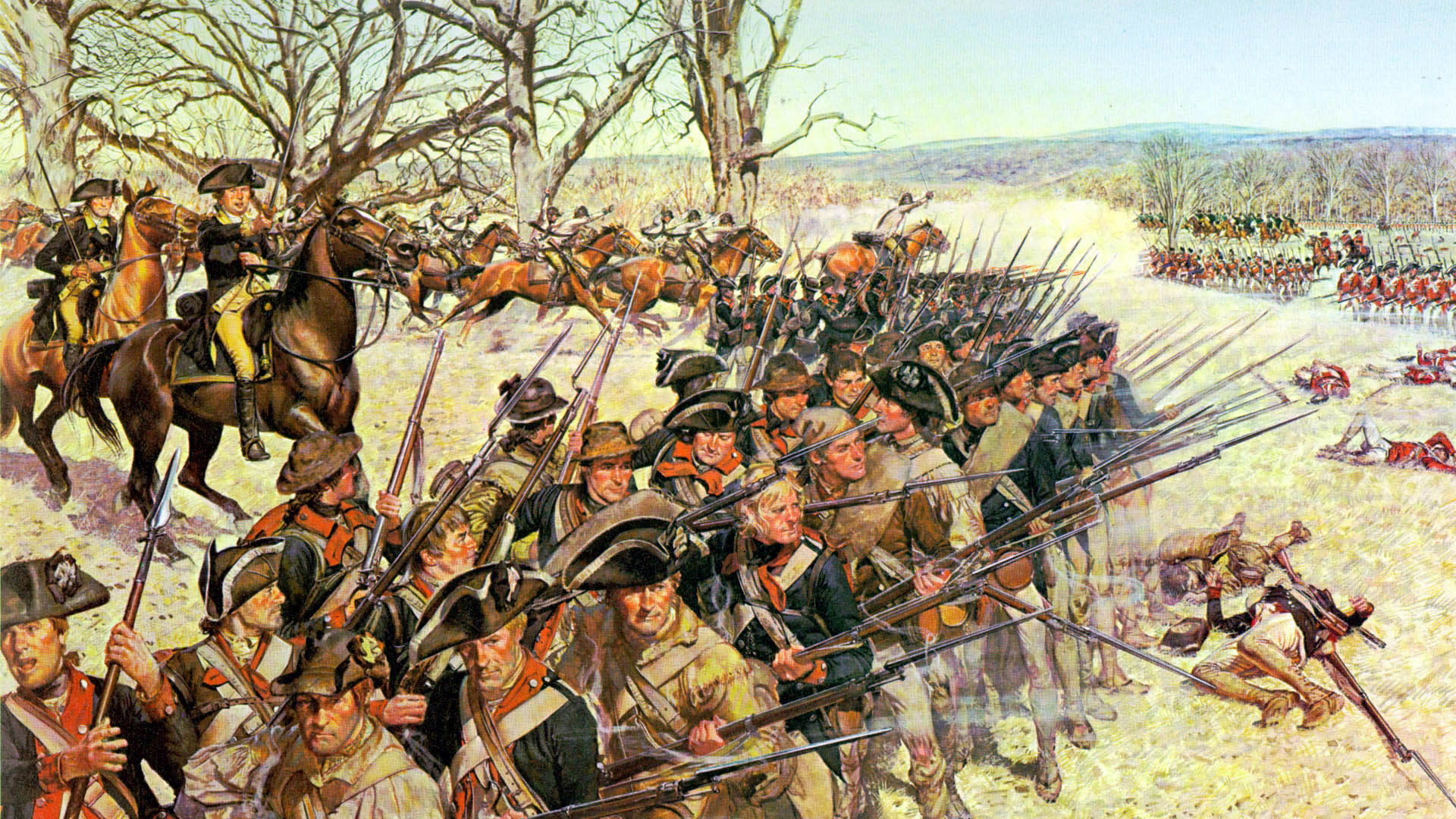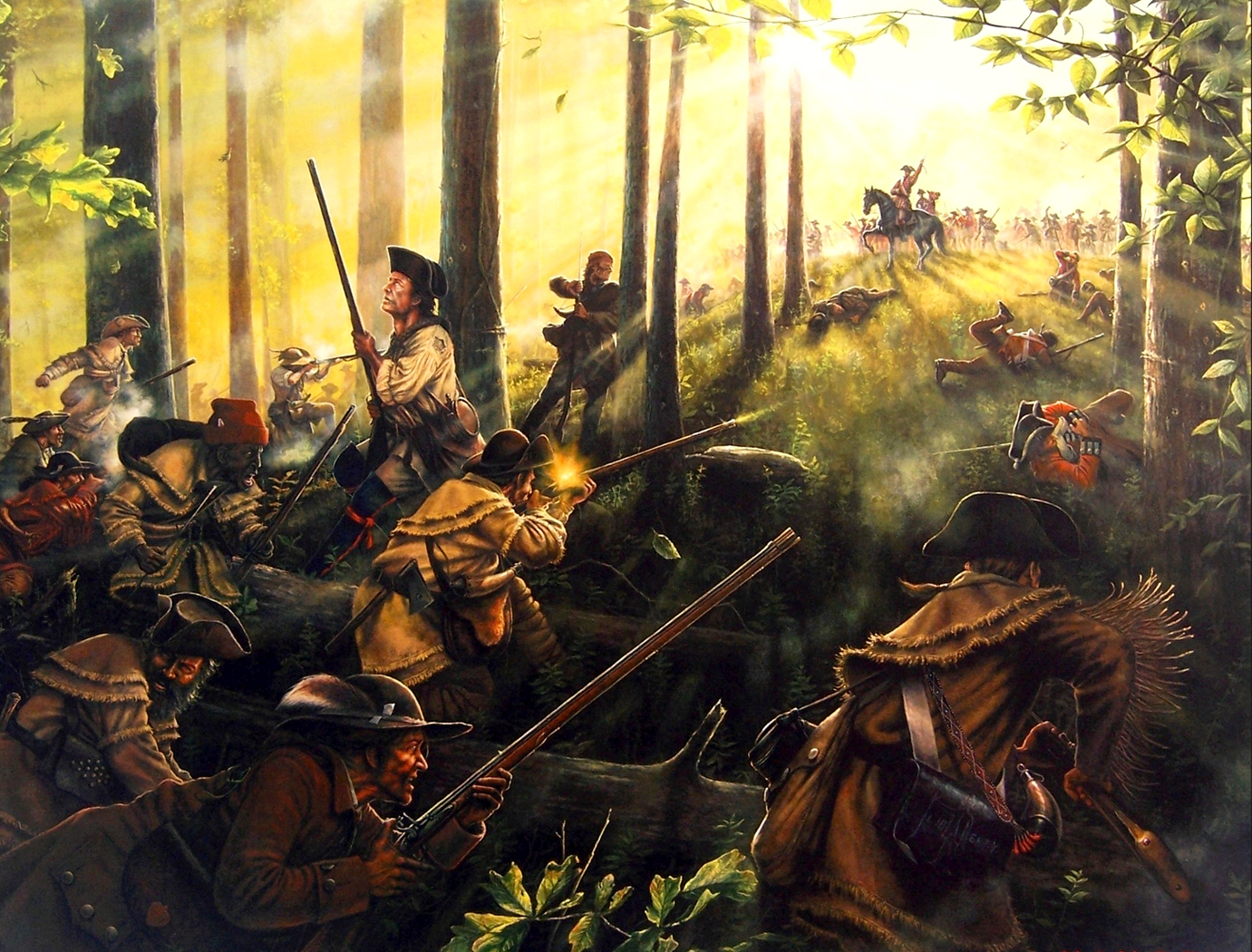The American Revolution: Liberty, Loyalty, and North Carolina’s Role

The fight for independence reached the farms, rivers, and hearts of North Carolina.
The Dive
The story of independence wasn’t just written in Boston or Philadelphia, it was lived on the muddy fields and pine forests of North Carolina. The colony was a patchwork of divided loyalties. In February 1776, at the Battle of Moore’s Creek Bridge near Wilmington, Patriot militia met a Loyalist force of mostly Scottish Highlanders marching to join the British. With quick thinking and clever engineering, the Patriots greased the bridge planks and removed its crossbeams, sending charging Loyalists into chaos. The victory crushed Loyalist hopes in the South, lifted Patriot morale, and inspired North Carolina’s Halifax Resolves two months later, making it the first colony to officially call for full independence from Britain.
Five years later, war thundered back into North Carolina at the Battle of Guilford Courthouse in March 1781. General Nathanael Greene’s smaller Continental force faced British General Cornwallis near present-day Greensboro. The Americans fought fiercely from behind fences and trees, using the terrain to their advantage. Though Cornwallis claimed victory, it came at a brutal cost, over a quarter of his army was lost. The pyrrhic win forced the British to retreat to the coast to recover, setting the stage for their surrender months later at Yorktown. Many historians now see Guilford Courthouse as the battle that tipped the scales toward American independence.
For North Carolina, the Revolution was as much a civil war as a fight against a king. Patriots and Loyalists clashed across the backcountry, not just on battlefields but in villages and even within families. Neighbors who once shared church pews found themselves on opposite sides of musket fire. This internal conflict revealed how independence was not a single choice, it was a series of hard, personal decisions about loyalty, survival, and belief in a future yet to be built.
Beyond the front lines, women carried the Revolution forward in quiet but vital ways. They ran farms and businesses, sewed uniforms, managed supplies, and passed secret messages under the noses of British patrols. Figures like Nancy Hart in Georgia and North Carolina’s own women of Edenton, who famously organized a tea boycott, proved that resistance came in many forms. African Americans, both enslaved and free, also fought on both sides of the conflict. The British promised freedom to those who joined their ranks, while some joined the Continental Army hoping that the ideals of liberty might one day extend to them. For many, the war became not just a fight for independence, but a fight for human dignity.
The ideals of the Revolution—liberty, equality, and self-government—were revolutionary in theory but incomplete in practice. The Declaration of Independence boldly proclaimed that ‘all men are created equal,’ yet millions remained enslaved, women had no political voice, and Indigenous nations were pushed aside as the new country expanded. These contradictions remind us that the Revolution was not the end of the story, it was the beginning of America’s long, unfinished struggle to make its promises real for everyone.
By 1783, the Treaty of Paris officially ended the war and recognized the United States as an independent nation. For North Carolinians and Americans alike, the Revolution’s greatest legacy wasn't just victory on the battlefield, but the idea that ordinary people could challenge power and shape their own government. The seeds of that belief would grow for generations, inspiring new movements for equality, justice, and democracy for centuries to follow.
Why It Matters
The American Revolution wasn’t just a battle for independence, it was an experiment in defining what freedom truly means. Looking at North Carolina’s story reminds us that history is built not only by generals and declarations, but by farmers, mothers, and neighbors who risked everything to shape a new idea of equality. Their struggles still echo today, challenging us to keep building a nation worthy of its founding promise.
?
Why was the victory at Moore’s Creek Bridge so important for North Carolina and the Patriot cause?
What made the Battle of Guilford Courthouse both a British win and a turning point for America?
How did loyalists and patriots in North Carolina experience the war differently?
What contradictions do you notice between the Declaration’s words and the realities of slavery or women’s rights?
If you were living in 1776, which side might you have chosen—and why?
Dig Deeper
A fast-paced overview of the American Revolution, its battles, and its broader meaning for different groups of people.
A musical look at how the colonies broke free from British rule and built a new nation.
Related

American Revolutionary War: From Protest to a New Nation
How arguments over taxes and rights grew into an eight-year war—and how ideas, allies, and perseverance turned thirteen colonies into the United States.

Halifax Resolves and the Road to Revolution
How North Carolina went from protest to the first official call for full independence from Britain.

The Declaration of Independence: Ideas, Action, and Aftermath
When the colonies declared independence, they didn’t just start a war—they launched an idea that would echo across centuries. But did America live up to it?
Further Reading
Stay curious!
